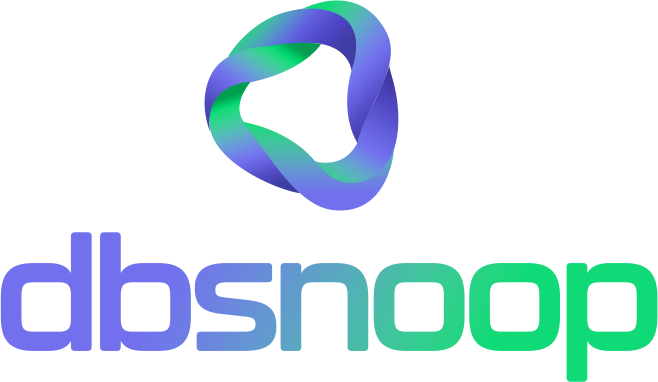
Nagios is an open-source monitoring platform widely used to monitor the integrity and performance of networks, servers, services, and applications. The solution offers a centralized view of IT infrastructure, enabling system administrators to detect issues before they affect critical business operations. Known for its flexibility and robustness, Nagios is a popular choice among small, medium, and large companies looking for an effective and customizable monitoring tool.
In this article, we will explore what Nagios is, its main features, and how it can help organizations manage their IT infrastructure efficiently and without interruptions.
Main Features of Nagios
- Network Monitoring: Monitor the status and performance of network devices such as switches, routers, firewalls, and more, ensuring that administrators are aware of any failure that may affect connectivity.
- Server Monitoring: The platform offers support for monitoring physical and virtual servers, including Linux, Windows, and other operating systems, offering complete visibility into CPU, memory, disk, and overall performance.
- Application Monitoring: Ensure that services like databases, web servers, and others are operating correctly.
- Alerts and Notifications: Configurable alerts via email, SMS, or other integrations ensure that administrators receive real-time notifications when a metric exceeds established limits.
- Web Interface: Offers an easy-to-use web interface for monitoring, real-time data visualization, and personalized dashboards with performance and availability reports.
- Custom Plugins: Highly customizable, allowing the creation of custom plugins for monitoring specific services. Thousands of plugins are available in the community, which can be utilized and adapted to specific needs.
- Scalability: Extremely scalable, allowing the monitoring of large environments with thousands of devices and services.
- SNMP Support: Offers support for the SNMP (Simple Network Management Protocol), allowing granular monitoring of network devices.
How Does Nagios Work?
Nagios operates by installing agents on servers and devices that need to be monitored. These agents collect metrics and status information and send it to the Nagios central server. The server then processes this data and presents it in a centralized web interface, allowing administrators to monitor the infrastructure in real time.
In addition to active monitoring, the tool also offers passive and external checks, integrating with other systems to collect monitoring data without requiring agents. This enables more flexible and adaptable monitoring for different types of infrastructure.
Benefits of Using Nagios
- Flexibility and Customization:It is highly customizable, allowing administrators to tailor the platform to meet the specific needs of their IT infrastructure. With support for plugins, virtually any service or device can be monitored.
- Centralized Visibility: It’s web interface offers a unified view of the entire IT infrastructure, allowing administrators to see important information in real time and take corrective actions quickly.
- Active Community Support: There is a large active community that shares plugins, tutorials, and troubleshooting tips, ensuring that common problems are quickly solved.
- Scalability for Large Infrastructures: For companies with large and distributed environments, the plataform provides a scalable solution capable of monitoring thousands of devices and services.
- Reduction of Downtime: With customizable alerts and real-time notifications, administrators can address problems before they impact business operations, significantly reducing downtime.
- Protocol Support: Offers broad protocol support for various services, including SNMP, SMTP, HTTP, SSL, and more, allowing robust infrastructure monitoring.
Why is Nagios Ideal for Companies of All Sizes?
It is widely used by startups, SMBs, and large corporations, due to its scalability and flexibility. It adapts to different IT environments, allowing teams to monitor operations and ensure service continuity.
- Startups & SMBs: For smaller companies, it offers a free monitoring solution with many customization options to meet the specific needs of growing businesses.
- Large Corporations: Large companies can rely on the plataform to monitor extensive IT environments and can scale it across multiple sites and integrate it with other monitoring tools.
- Public Sector: Public sector organizations can benefit from it, as the open-source platform can be configured to meet high security and compliance standards.
Comparison Between Nagios and Other Tools
Nagios is a robust solution, but here’s a comparison with some other popular monitoring tools:
- Nagios vs. Zabbix: While both are open-source monitoring tools, Zabbix offers a more modern interface and more intuitive reporting. However, Nagios is more flexible in terms of customization and has a wider variety of plugins.
- Nagios vs. PRTG: PRTG offers an all-in-one solution with limited licenses, but Nagios is completely free and offers better scalability for large infrastructures. PRTG, on the other hand, has a more intuitive interface and a lower learning curve.
- Nagios vs. SolarWinds: SolarWinds is a paid solution that is highly robust for large companies but requires more time for initial setup. Nagios, being open-source, is more flexible but requires more configuration time.
Nagios Free Edition
Nagios Core, the open-source version, is completely free. However, companies needing technical support and additional functionality may choose to upgrade to NagiosXI and the commercial version of the platform. NagiosXI offers a more user-friendly interface and premium support, along with license plans based on the number of monitored hosts.
Conclusion
Nagios is an industry-leading monitoring tool for businesses of all sizes. With flexibility and customization, it offers a comprehensive view of IT infrastructure, allowing system administrators to monitor network, server, and application integrity in real-time, ensuring that issues are identified and resolved quickly.
Although Nagios is a powerful and free infrastructure monitoring solution, its complexity as an open-source platform may impose limitations on advanced features and technical support. Additionally, its customization options require users to invest significant time in configurations. Despite offering support for a wide range of plugins and services, it may lack features for predictive insights and artificial intelligence-based automation.
In comparison, dbsnOOp offers a set of advanced features that justify the investment in a paid solution. With real-time monitoring powered by artificial intelligence for predictive insights, dbsnOOp significantly reduces MTTR (Mean Time to Resolution) and increases SLA (Service Level Agreement) by eliminating bottlenecks and optimizing system efficiency in real-time.
dbsnOOp also stands out for offering these advanced features at an affordable price. For companies seeking more control and detailed insights into their database and infrastructure, dbsnOOp provides a seamless migration from free tools like Nagios to a paid solution, ensuring greater reliability and system performance across diverse IT environments.
Give it a try for 14 days, no burocracy, no credit card
Learn more about Flightdeck!


